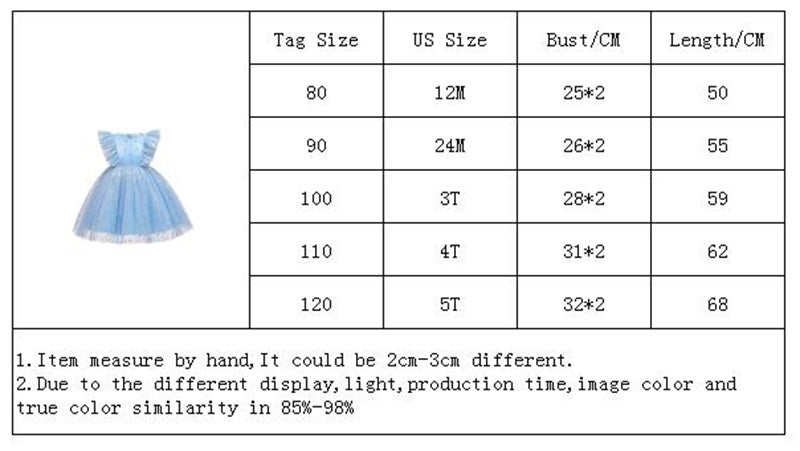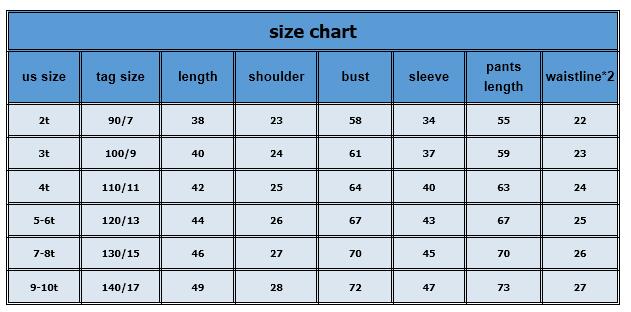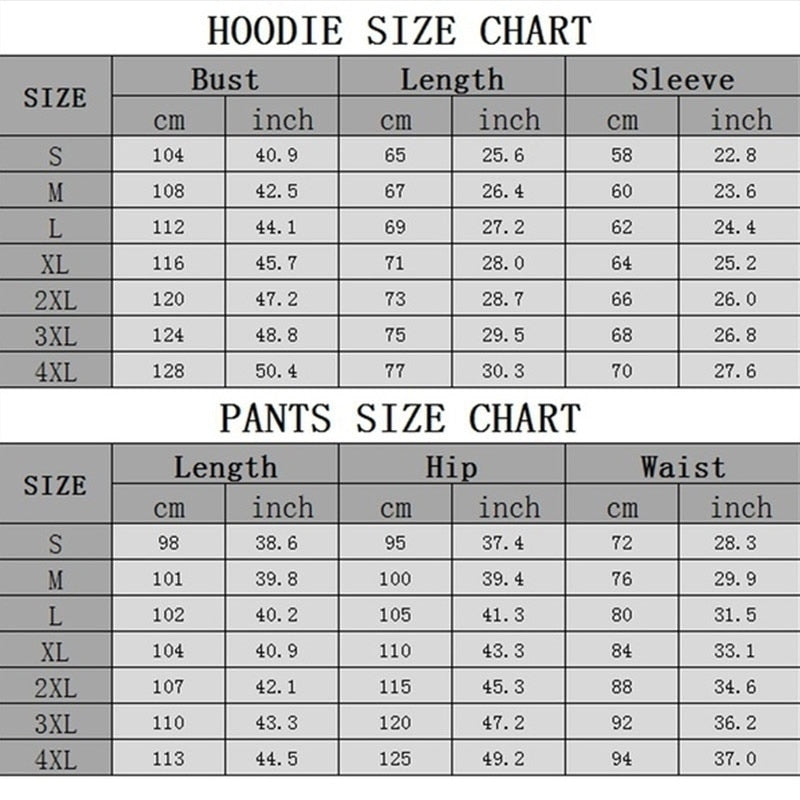Key Takeaways:
- Introduction
- Growth of Mobile Shopping
- Rise of Social Commerce
- Personalization in eCommerce
- Sustainable Shopping Trends
- Omnichannel Retailing
- Impact of Augmented Reality (AR) on Shopping
The Evolution of eCommerce in Australia
A Rapidly Growing Market
The eCommerce landscape in Australia has witnessed a remarkable transformation over the past decade. With an increasing number of consumers turning to the internet for their shopping needs, the market has rapidly evolved to cater to this demand. In fact, recent reports suggest that online shopping in Australia has surged, accounting for a significant portion of the total retail sales. This shift not only highlights Australian consumers' growing preference for the convenience of online shopping but also underscores the importance of businesses adapting to these new consumer behaviors.
The Role of Technology in Shaping Trends
Technological advancements are reshaping the online shopping experience in unprecedented ways. From mobile commerce to artificial intelligence, technologies are streamlining design and functionality, enhancing customer interactions, and personalizing the shopping experience. For instance, the rise of mobile shopping apps has made purchasing easier than ever, while AI-powered recommendation systems provide tailored product suggestions, making the shopping experience smoother and more enjoyable. Staying informed about these technological trends is crucial for both consumers and retailers, as they signify where the market is headed.
The Importance of Consumer Insights
Understanding consumer preferences is essential for success in the ever-evolving eCommerce market. With the behavior of online shoppers continually changing, businesses that monitor and analyze these shifts can better meet customer needs. The significance of utilizing data analytics cannot be overstated—it helps identify emerging trends, predict purchasing behaviors, and tailor marketing efforts accordingly. Companies that leverage consumer insights can create more engaging shopping experiences and foster brand loyalty.
Adapting to New Trends
To remain competitive, businesses must constantly adapt to new trends emerging within the eCommerce sector. Strategies such as embracing sustainability, enhancing user experience, and offering multiple payment options are just a few examples of how retailers are evolving to meet changing consumer expectations. The significance of staying updated with the latest trends cannot be underestimated; it directly impacts a company’s ability to attract and retain customers in this rapidly changing environment.
In conclusion, comprehending the ongoing evolution of the eCommerce landscape in Australia is pivotal for anyone involved in online shopping, whether they are consumers or businesses. By staying abreast of the latest trends and innovations, both parties can navigate this dynamic marketplace more effectively, ensuring a future where online shopping remains a convenient and appealing option.
Growth of Mobile Shopping
The Rise of Mobile Commerce
The surge in mobile shopping is one of the most significant trends shaping the eCommerce landscape in Australia. With over 80% of Australians owning a smartphone, the convenience and accessibility of shopping on mobile devices have transformed the way consumers interact with brands. Recent statistics indicate that mobile devices account for approximately 40% of all online sales in Australia, showcasing the pivotal role they play in the shopping experience.
Mobile Shopping Statistics
According to a 2023 report from the Australian Retailers Association, mobile sales have increased by over 25% in the past year alone. Here’s a breakdown of key statistics:
| Statistic | 2022 | 2023 | Growth (%) |
|---|---|---|---|
| Percentage of Online Sales via Mobile | 32% | 40% | 25% |
| Number of Mobile Shoppers | 4.5 million | 5.5 million | 22% |
| Growth in Mobile App Downloads | 7 million | 9 million | 29% |
These numbers illustrate not just the current state of mobile shopping, but also its trajectory, hinting at a future where mobile platforms further dominate the retail sector.
Importance of Mobile-Optimized Websites and Apps
In light of the growing trend of mobile shopping, the importance of having mobile-optimized websites and applications cannot be overstated. A seamless user experience can significantly impact conversion rates. Statistics show that optimized mobile sites can increase sales by up to 30% compared to non-optimized versions. Here are some features that enhance mobile shopping:
- Responsive Design: Ensures compatibility across various devices and screen sizes.
- Fast Loading Times: Users are more likely to abandon sites that load slowly, so optimization is crucial.
- Easy Navigation: Simplified menus and touch-friendly buttons enhance user experience.
Furthermore, investing in mobile apps offers brands an opportunity to engage with customers directly through personalized notifications and streamlined shopping experiences. Studies have shown that users spend over 90% of their time
Looking Ahead
As we navigate through 2024, the importance of understanding and adapting to the growth of mobile shopping will only increase. Brands that prioritize mobile-first strategies can establish a competitive edge, ultimately leading to enhanced customer satisfaction and loyalty. With innovations in mobile technology on the rise, including augmented reality shopping experiences and AI-driven personalized recommendations, the future of mobile shopping in Australia is bright and teeming with possibilities.
Rise of Social Commerce
The integration of social media into our daily lives is reshaping the eCommerce landscape in Australia. As platforms like Instagram, Facebook, and TikTok continue to evolve, they are becoming vital tools for brands to not only showcase their products but also engage their customers. This shift has ushered in a new era of social commerce, where shopping is more than just a transaction—it's an experience.
The Social Media Shopping Experience
Consumers are increasingly turning to social media to discover new products and brands. With the convenience of browsing through appealing images and videos, users can shop directly within their favorite apps. This blend of entertainment and shopping is transforming how Australian consumers approach buying decisions.
Leveraging Influencer Marketing
Brands are recognizing the power of influencers in driving sales through social media. By collaborating with key figures in various niches, companies can tap into trusted voices that resonate with their target audience. Here are some strategies brands are employing:
- Authentic Partnerships: Aligning with influencers who genuinely connect with their products enhances credibility.
- Exclusive Promotions: Offering unique discount codes through influencers encourages immediate purchases.
- Interactive Content: Hosting live sessions or Q&A events boosts engagement and provides real-time interaction.
Engagement Through User-Generated Content
User-generated content (UGC) plays a crucial role in social commerce. By encouraging customers to share their experiences, brands can showcase authentic reviews and testimonials. Strategies include:
- Photo Contests: Running contests for the best product photos increases community involvement.
- Branded Hashtags: Creating specific hashtags for users to share their content helps build a unique brand identity.
- Feature Customers: Highlighting customers on the brand’s social feed fosters loyalty and community.
Optimizing for Direct Shopping
Many platforms are integrating shopping features that allow users to purchase products directly through their feeds. This includes:
- Shoppable Posts: Adding product tags to posts makes it easy for customers to click and buy.
- In-App Checkouts: Streamlining the purchasing process within the app enhances user experience.
- Dynamic Ads: Targeted advertisements based on user behavior promote relevant products directly to potential buyers.
As we navigate through 2023, the role of social commerce in shaping online shopping trends will only continue to expand. By creating immersive and interactive experiences on social media, brands can drive engagement, build loyalty, and ultimately boost sales in the vibrant Australian eCommerce market.
Personalization in eCommerce
As we delve deeper into the trends defining the future of online shopping in Australia, one pivotal element emerges clearly: personalization in eCommerce. By leveraging data analytics and artificial intelligence (AI), businesses are creating tailor-made shopping experiences that resonate with individual preferences, leading not just to increased sales but also to stronger customer loyalty.
The Power of Data Analytics
Data analytics forms the bedrock of a personalized shopping experience. Retailers gather a plethora of information from customer interactions, purchases, and behavior patterns online. By analyzing this data, businesses can identify trends and preferences unique to each consumer, tailoring their offerings accordingly. For instance, a visitor who frequently browses athletic gear may find themselves greeted with targeted recommendations for running shoes and fitness trackers, thus enhancing the relevance of their shopping experience.
AI's Contribution to Personalization
Integrating AI technology further amplifies the impact of personalized shopping. Machine learning algorithms can predict consumer behavior based on historical data, enabling eCommerce platforms to present curated product suggestions with exceptional accuracy. As one industry expert states,
"AI isn't just about automation; it's about transformation. When AI meets personalization, it creates a shopping experience that feels uniquely tailored to every individual."This transformative power is evident in various applications—from dynamic pricing to personalized marketing campaigns, each designed to cater to the individual's needs and preferences.
Crafting Unique Marketing Strategies
Beyond product recommendations, personalization extends into marketing strategies. Businesses are deploying personalized marketing tactics, such as tailored emails and special promotions that align with a customer’s past shopping behavior. For example, if a customer previously showed interest in eco-friendly products, they might receive targeted emails highlighting new sustainable options, thereby enhancing the likelihood of engagement and conversion.
Enhancing Customer Engagement and Loyalty
The culmination of expertly woven personalized experiences is the enhancement of customer engagement and loyalty. When consumers feel understood and valued, they’re more likely to return to a brand that recognizes their unique preferences. This emphasis on personalization cultivates a sense of community, where customers don’t just buy products; they become part of a brand's narrative. This emotional connection is crucial in today’s competitive eCommerce landscape.
As we continue to witness the evolution of online shopping in Australia, it becomes increasingly clear that embracing personalization through data and AI is not merely an option—it's a necessity for retailers eager to thrive in a vibrant digital economy.
Sustainable Shopping Trends
The evolution of eCommerce in Australia is witnessing a noteworthy shift towards sustainability. As more consumers become environmentally conscious, there's a rising demand for eco-friendly products and practices within the online shopping realm. This trend is reshaping how Australian brands operate, pushing them to adopt sustainable practices that resonate with customers.
Consumer Insights into Sustainability
A recent survey indicates that over 70% of Australian consumers actively seek out brands that prioritize sustainability. Shoppers are increasingly motivated by factors such as:
- Environmental Impact: Consumers are more aware of the effects their purchases have on the planet, leading them to choose brands with eco-friendly initiatives.
- Transparency: Brands that openly share their sustainability practices earn greater trust, with consumers favoring those who detail their supply chain and production methods.
- Quality over Quantity: Many Australians are now inclined to invest in fewer, higher-quality items rather than a larger volume of cheaper products, reflecting a shift towards minimalist consumption.
Leading Brands in Eco-Friendly eCommerce
Several Australian companies are at the forefront of this sustainable movement, employing innovative strategies to meet the growing demand. Here are some noteworthy examples:
- KeepCup: Known for its reusable cups, KeepCup has revolutionized the way Australians consume coffee on-the-go, promoting a zero-waste lifestyle.
- The Better Clothing Company: This brand focuses on using organic materials and ethical manufacturing processes. They prioritize transparency by sharing their sustainability journey with customers.
- Who Gives A Crap: Specializing in eco-friendly toilet paper, this brand donates 50% of its profits to help build toilets for those in need, combining sustainability with social responsibility.
Challenges and Opportunities in Sustainable Shopping
While the trend of sustainable shopping is thriving, challenges remain. Many brands face difficulties in sourcing sustainable materials without compromising quality or affordability. However, this also opens up opportunities for innovation in eco-friendly solutions and production methods. By addressing these challenges head-on, brands can not only enhance their brand loyalty but also contribute positively to the environment.
In conclusion, the demand for sustainable shopping trends in Australia is more than a passing fad – it’s a cultural shift towards responsible consumption. As consumers continue to advocate for environmental sustainability, brands that embrace these values will thrive in the ever-evolving eCommerce landscape.
Omnichannel Retailing: Creating Seamless Shopping Experiences
Understanding Omnichannel Strategies
In the ever-evolving landscape of online shopping in Australia, businesses are increasingly adopting omnichannel strategies to enhance the customer journey. By integrating various shopping channels—be it physical stores, websites, or mobile apps—retailers aim to create a cohesive experience where consumers can transition smoothly between platforms. This interconnectivity not only enriches the shopping experience but also simplifies it, leading to greater customer satisfaction.
Personalization Across Channels
A pivotal aspect of omnichannel retailing is the emphasis on personalization. By utilizing data from customer interactions across different platforms, retailers can tailor their marketing efforts and product recommendations. For instance, if a customer browses a product on the website, they may receive personalized emails with discounts if they abandon their cart. This targeted approach enhances customer engagement and ultimately improves conversion rates.
Unified Customer Service
Another critical factor driving omnichannel success is unified customer service. Consumers expect support that is as seamless as their shopping experience. Implementing a centralized customer service system enables businesses to provide consistent support, regardless of the platform. This means that if a customer starts a conversation via social media, they can continue it through email or phone without having to repeat themselves—a feature highly appreciated by today’s discerning shoppers.
"The future of retail is not a single channel but the fusion of multiple channels into a seamless experience." - Industry Expert
Impact on Customer Satisfaction
The comprehensive integration of omnichannel strategies significantly boosts customer satisfaction. By allowing shoppers to enjoy a consistent experience—be it online or in-store—customers feel valued and understood. A smooth transition from browsing to purchasing, coupled with prompt customer service, cultivates brand loyalty and encourages repeat business. In fact, studies show that businesses that prioritize omnichannel experiences see a 10% increase in customer satisfaction ratings.
The Role of Technology
Technology plays an indispensable role in supporting omnichannel retailing. Platforms such as Customer Relationship Management (CRM) systems and data analytics tools enable businesses to harvest insights that drive personalized experiences. Moreover, the integration of Artificial Intelligence (AI) is revolutionizing how retailers analyze consumer behavior, allowing for real-time adjustments in inventory and marketing strategies that reflect trends and preferences.
As the online shopping landscape in Australia rapidly transforms, adopting omnichannel strategies is not just about keeping up; it’s about staying ahead. Retailers who embrace this multifaceted approach will likely thrive in coming years as customer expectations continue to evolve.
Impact of Augmented Reality (AR) on Shopping
Visualizing Products in Real-Time
Augmented Reality (AR) technology is revolutionizing the way consumers interact with products online. By enabling customers to visualize items in their own surroundings, AR enhances the shopping experience, making it more immersive and personalized. For instance, furniture retailers like IKEA now offer apps that allow users to place 3D models of furniture directly in their living spaces. This capability not only helps in making informed purchasing decisions but also minimizes the hesitation often associated with buying large items online.
Increased Customer Engagement
The integration of AR into eCommerce platforms has resulted in significantly increased customer engagement. Brands are increasingly harnessing AR features to create interactive experiences, encouraging consumers to explore and connect with products in a fun and innovative way. For example, cosmetic companies allow users to 'try on' makeup virtually through their apps, enhancing the overall shopping experience and increasing customer satisfaction.
Reducing Return Rates
One of the most prominent challenges of online shopping is the high return rate due to mismatched expectations. AR effectively addresses this issue by allowing consumers to visualize and evaluate products before purchase. According to a study, brands utilizing AR experienced up to a 30% reduction in return rates. This capability not only saves costs for retailers but also enhances customer trust in their buying choices.
Enhancing Brand Loyalty
When brands invest in AR technology, they communicate innovation and a commitment to enhancing the customer experience. This leads to increased brand loyalty, as customers are drawn to engaging shopping experiences. A recent survey indicated that 70% of users are more likely to make repeat purchases from brands offering AR features, demonstrating the technology's ability to foster lasting customer relationships.
Table of AR Benefits in eCommerce
| Benefit | Description |
|---|---|
| Product Visualization | Enables customers to see products in their own environment. |
| Increased Engagement | Provides interactive experiences that captivate users. |
| Lower Return Rates | Helps customers make informed decisions, reducing mismatches. |
| Increased Brand Loyalty | Creates innovative experiences that keep customers returning. |
The Future of AR in Online Shopping
As AR technology continues to evolve, its impact on online shopping is expected to grow. Emerging advancements such as AR-powered virtual stores and enhanced user interfaces promise a shopping experience that is not only comprehensive but also highly engaging. Retailers who embrace these changes early can stay ahead in the competitive eCommerce landscape, ensuring they offer customers the cutting-edge experiences they demand.
Conclusion
In summary, the latest eCommerce trends are significantly shaping the landscape of online shopping in Australia. From the rise of mobile commerce to the growing importance of sustainability and personalization, businesses must stay ahead of the curve to meet changing consumer expectations. The integration of innovative technologies, such as artificial intelligence and augmented reality, is not just enhancing user experiences but also driving higher conversion rates.
Additionally, understanding the shifting demographics and shopping behaviors is crucial for any eCommerce strategy. As Australian consumers become increasingly engaged online, leveraging social media platforms and embracing omni-channel strategies will ensure that brands remain visible and relevant in this competitive market.
As you navigate the evolving eCommerce landscape, consider how these trends can be incorporated into your own online business strategy. What steps can you take today to align with the shifting consumer preferences in 2023? Reflect on your approach and think about the opportunities that await as you adapt to emerging technologies and market demands. Embrace these changes to not only survive but thrive in the world of online shopping in Australia.
FAQs
What is the primary purpose of this website?The primary purpose of this website is to provide valuable information and resources tailored to our audience's needs, helping them find solutions and answers to their questions.
How can I contact customer support?You can easily reach our customer support team via our Contact Us page, where you'll find options to send an email, chat live, or call for assistance.
Is my personal information safe on this site?Yes, we prioritize user privacy and security by implementing industry-standard encryption and numerous safety measures to protect your personal information.
Can I unsubscribe from the newsletter at any time?Absolutely! You can unsubscribe from our newsletter at any time by clicking the unsubscribe link included in our emails or managing your preferences on your account settings page.
What types of content can I find here?This website features a variety of content, including blogs, tutorials, articles, and videos that cater to diverse topics and interests within our niche.
Are there any membership fees associated with using this site?No, our website is completely free to use, providing access to valuable resources without any membership fees or hidden costs.
How frequently is the content updated?We strive to keep our content fresh and relevant by updating it regularly. You can expect new articles and resources to be published weekly.
Can I leave feedback or suggestions for improvement?Yes! We welcome your feedback and suggestions for improvement, which you can share through our feedback form available on the site.
Are the articles professionally researched?Yes, all our articles are thoroughly researched and vetted by professionals in their respective fields to ensure accuracy and reliability.
How can I share content from the website on social media?Sharing our content on social media is simple! Use the share buttons located at the bottom of each article to post directly to your social media accounts.





























































































